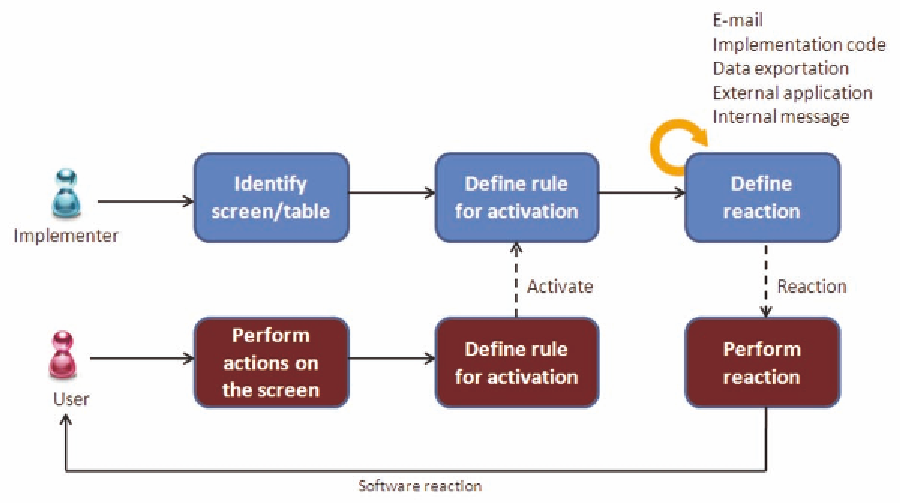Information Technology Reference
In-Depth Information
Figure 4. Event and alert sub-system process
a certain product (“abc”) is being purchased on
quantities above 1000:
“ WHERE product_code = '” +
product_code + “'”, ;
“result_cursor”)
IF RECCOUNT(“result_cursor”) > 0
IF result_cursor.soma >
12000
…
ENDIF
ENDIF
…
IF product_code = “abc” AND
quantity > 1000
THEN
RETURN .f.
ELSE
RETURN .t.
ENDIF
This example uses an internal software func-
tional called “
u_sqlExec
”, which sends a string
variable (containing a Transact-SQL instruction)
to the database layer, and return the retrieved data
to a cursor/dataset called “result_cursor”.
The FME model defined the trigger execution
before (named “User Rules”) or after (named
“User Events”) saving records on the screen. To
implement such functionalities, it is necessary to
make programming adjustments on Manufactor's
main classes. However, since this software has
If the product code is equal to “abc” and quan-
tity is higher than 1000, the rule returns a false
value (.f.), which means that the action will be
triggered. For harder implementations, the code
can achieve a higher complexity, using internal
software personal instructions; for instance:
u_sqlExec(“SELECT SUM(quantity)
AS soma FROM orders “ + ;

Search WWH ::

Custom Search